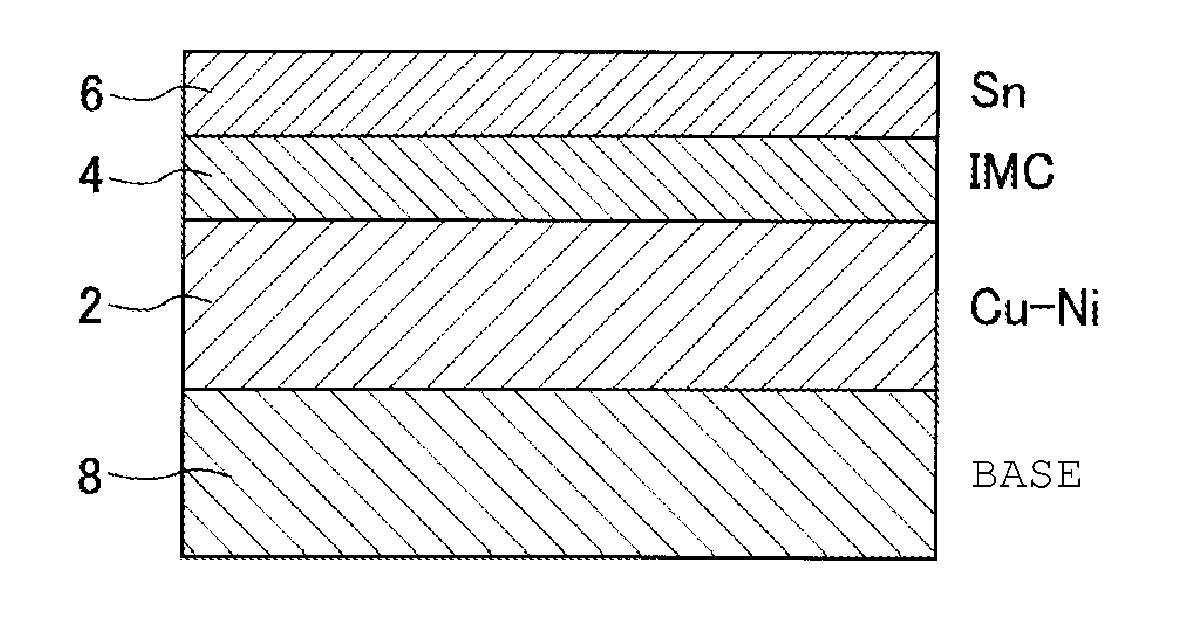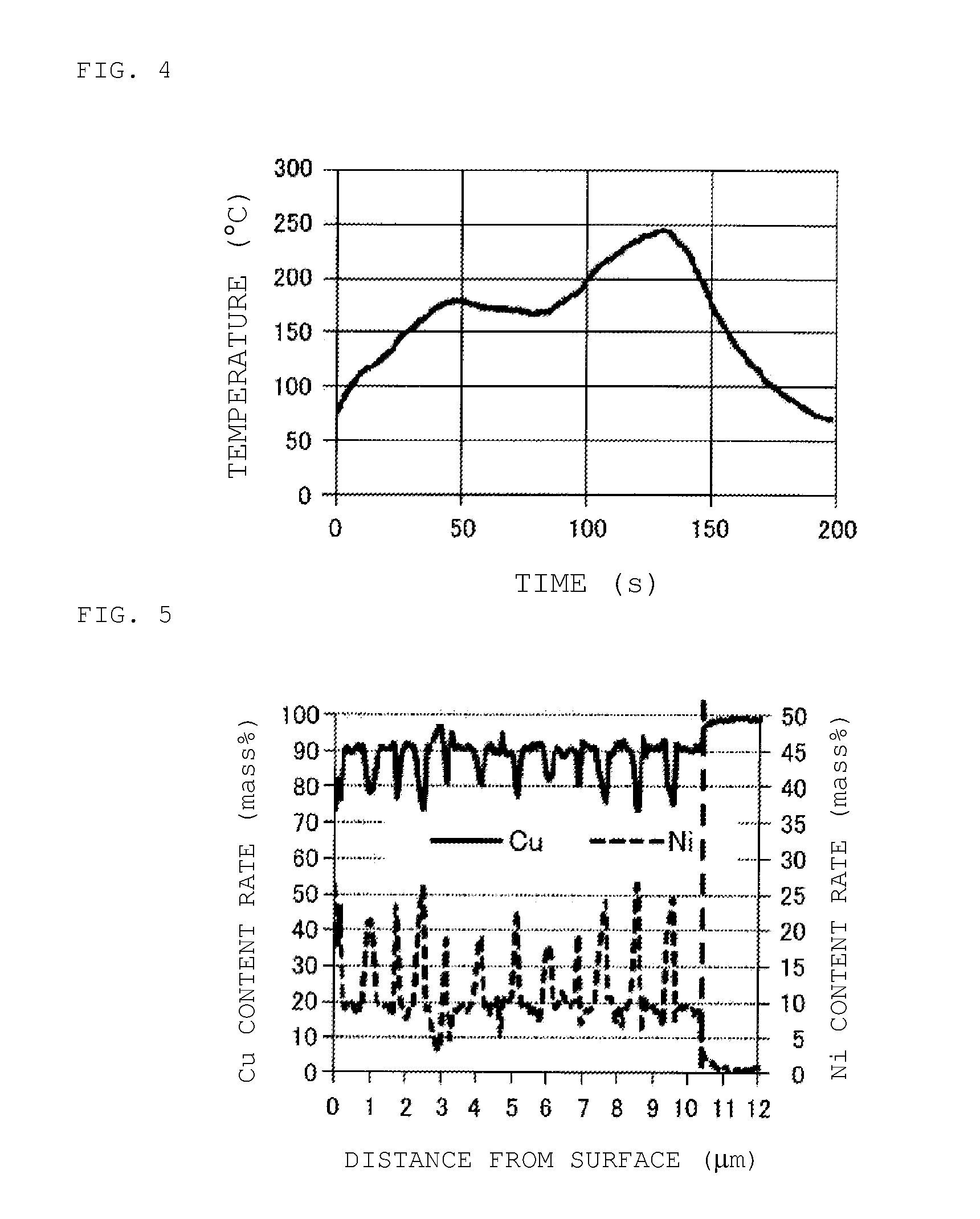Bonding member
a technology of bonding member and bonding plate, which is applied in the direction of superimposed coating process, soldering apparatus, manufacturing tools, etc., can solve the problem of re-melted solder
- Summary
- Abstract
- Description
- Claims
- Application Information
AI Technical Summary
Benefits of technology
Problems solved by technology
Method used
Image
Examples
experimental example
[0042]In the experimental example, as the following Example 1, Example 2, Comparative Example 1, Comparative Example 2, Comparative Example 3, and Comparative Example 4, six types of samples including Cu—Ni alloy plating films formed under different conditions were created by applying Cu—Ni alloy electrolytic plating to the surface of a base to form a Cu—Ni alloy plating film containing a Cu—Ni alloy as its main constituent, and then applying Sn electrolytic plating to form a Sn plating layer, and the samples were evaluated.
[0043]A glass epoxy substrate (wiring substrate) with a number of Cu electrode patterns formed on the surface of the substrate was used for the base. More specifically, with the Cu electrode patterns on the glass epoxy substrate as the base, the surfaces of the Cu electrode patterns were subjected to electrolytic plating. The Cu electrode patterns each have a rectangle shape of 0.8 mm in the X direction (transverse direction) and 1.5 mm in the Y direction (longit...
example 1
[0044]In the Cu—Ni alloy electrolytic plating for the sample according to Example 1, as a plating solution, a mixed aqueous solution of 0.03 mol / L of nickel sulfate hexahydrate, 0.06 mol / L of copper sulfate pentahydrate, and 0.15 mol / L of sodium gluconate was used into which an appropriate amount of a film conditioner was put. The pH of the plating solution was 4.5, and the temperature of the plating solution was 40° C. Then, the electrolytic plating current set at 80 A / m2 for 2 minutes and set at 150 A / m2 for 5 minutes was regarded as one cycle, and 12 cycles were implemented. As a result, a Cu—Ni alloy plating film of 10 μm in thickness, containing a Cu—Ni alloy as its main constituent was formed on the surface of the base (Cu electrode pattern).
example 2
[0045]In the Cu—Ni alloy electrolytic plating for the sample according to Example 2, as a plating solution, a mixed aqueous solution of 0.03 mol / L of nickel sulfate hexahydrate and 0.2 mol / L of copper sulfate pentahydrate was used into which appropriate amounts of a complexing agent and a film conditioner were put. The pH of the plating solution was 5.0, and the temperature of the plating solution was 50° C. Then, the electrolytic plating current set at 80 A / m2 for 1 minute and set at 300 A / m2 for 2 minutes was regarded as one cycle, and 12 cycles were implemented. As a result, a Cu—Ni alloy plating film of 10 μm in thickness, containing a Cu—Ni alloy as its main constituent was formed on the surface of the base (Cu electrode pattern).
PUM
| Property | Measurement | Unit |
|---|---|---|
| mass ratio | aaaaa | aaaaa |
| mass ratio | aaaaa | aaaaa |
| mass ratio | aaaaa | aaaaa |
Abstract
Description
Claims
Application Information
 Login to View More
Login to View More - R&D
- Intellectual Property
- Life Sciences
- Materials
- Tech Scout
- Unparalleled Data Quality
- Higher Quality Content
- 60% Fewer Hallucinations
Browse by: Latest US Patents, China's latest patents, Technical Efficacy Thesaurus, Application Domain, Technology Topic, Popular Technical Reports.
© 2025 PatSnap. All rights reserved.Legal|Privacy policy|Modern Slavery Act Transparency Statement|Sitemap|About US| Contact US: help@patsnap.com



